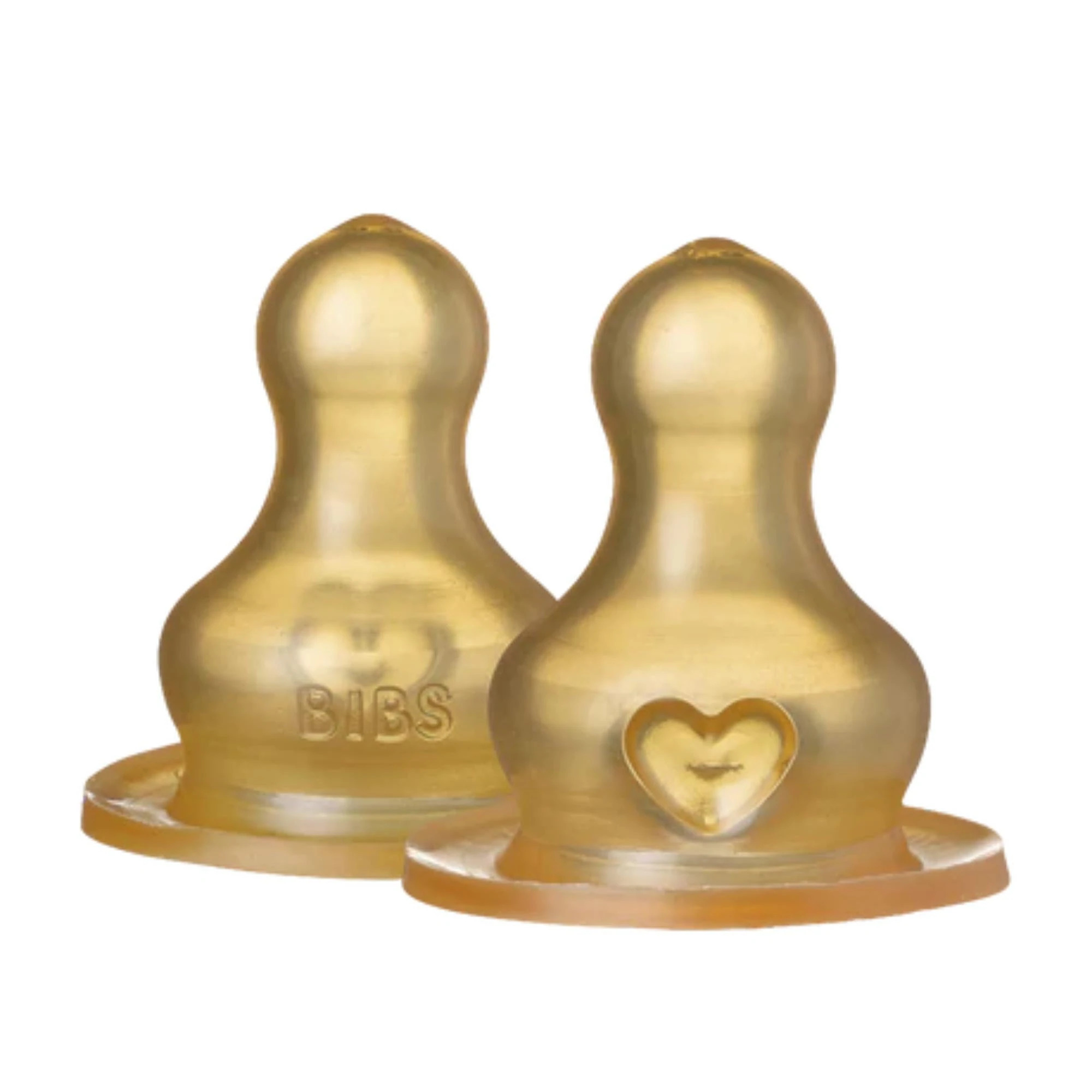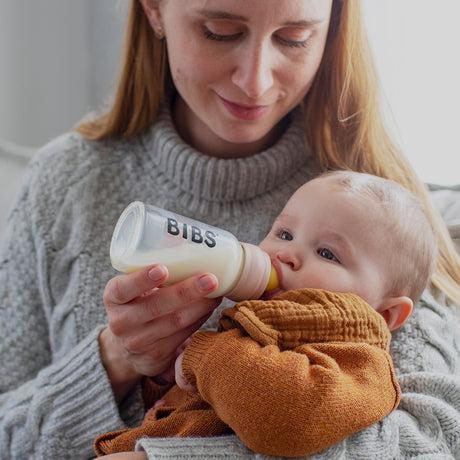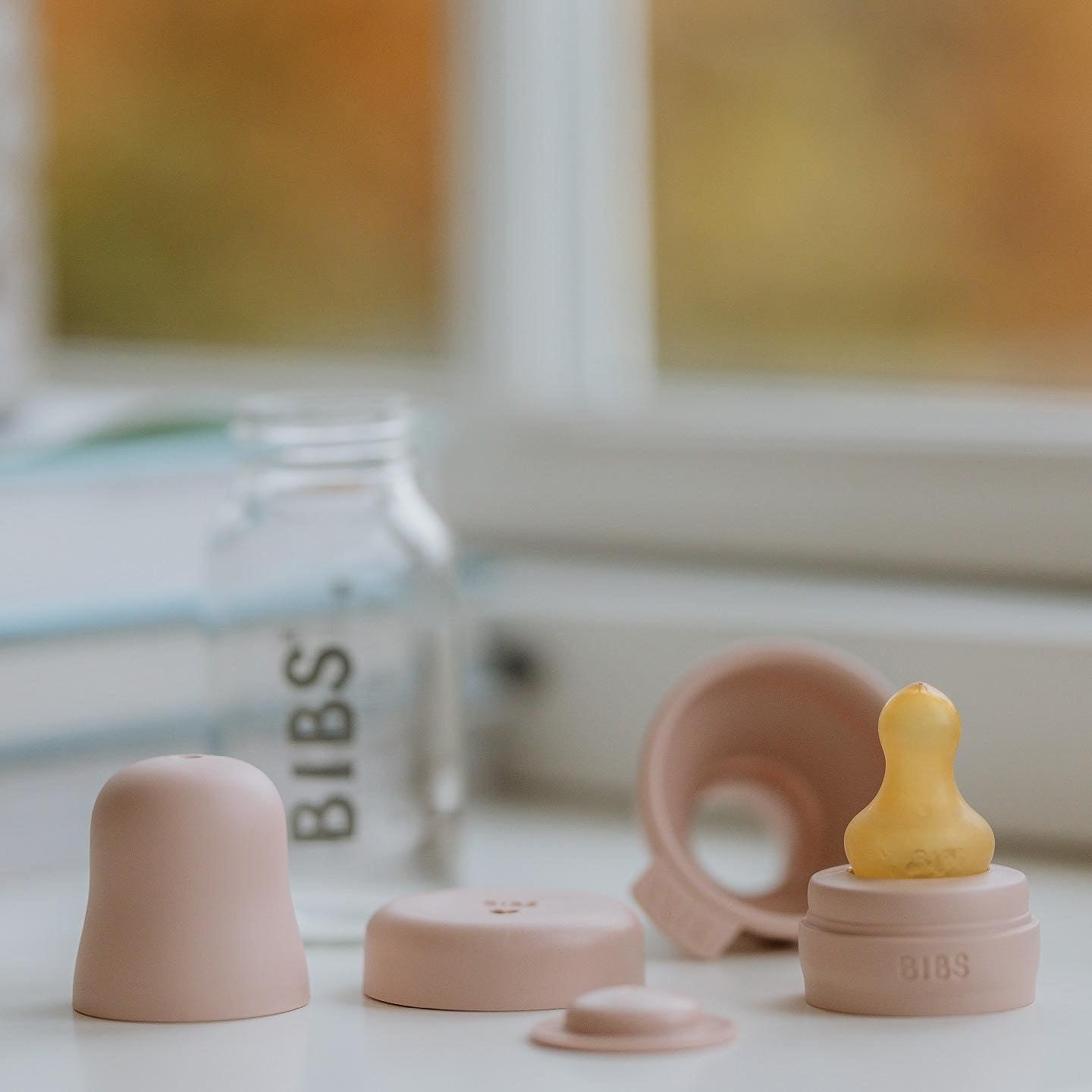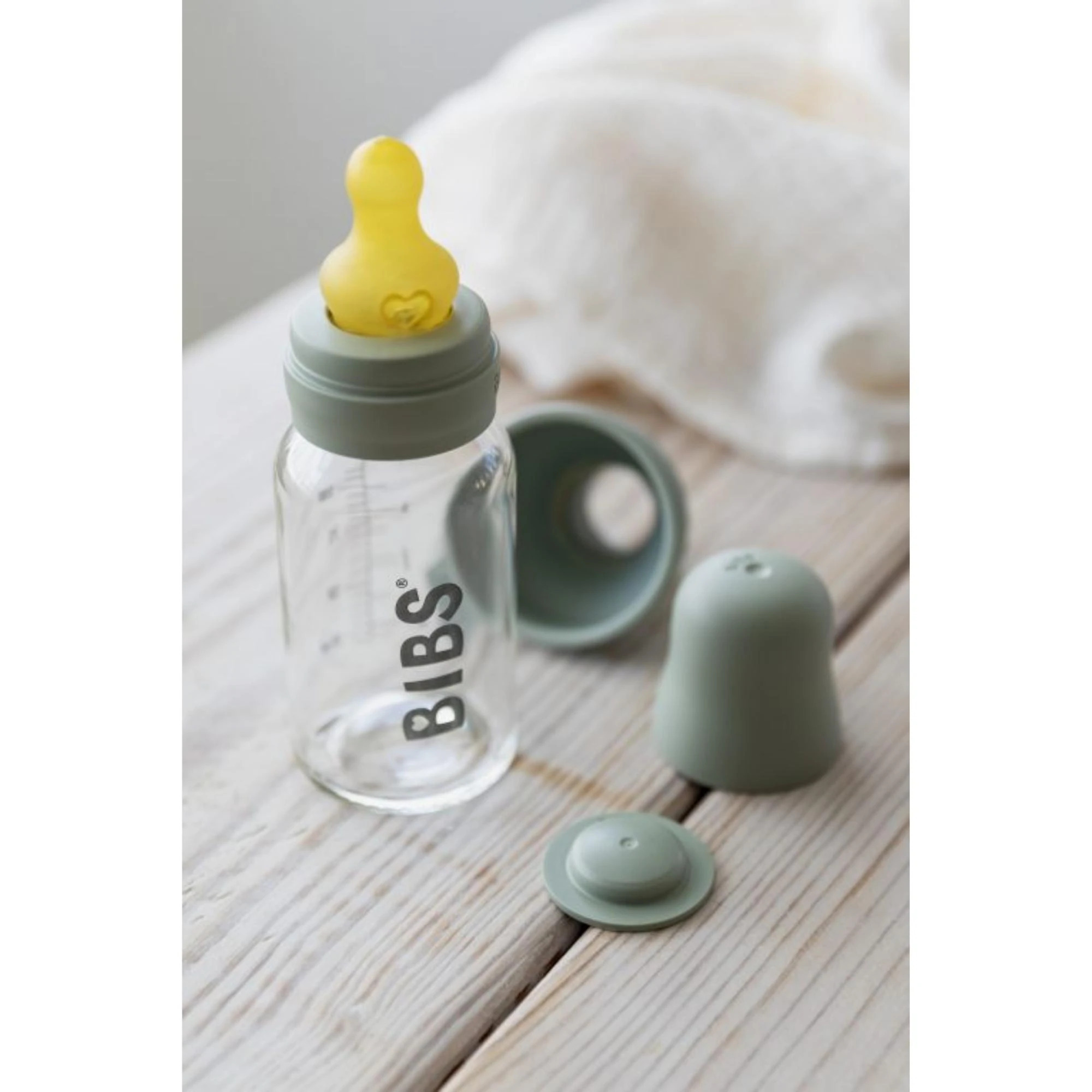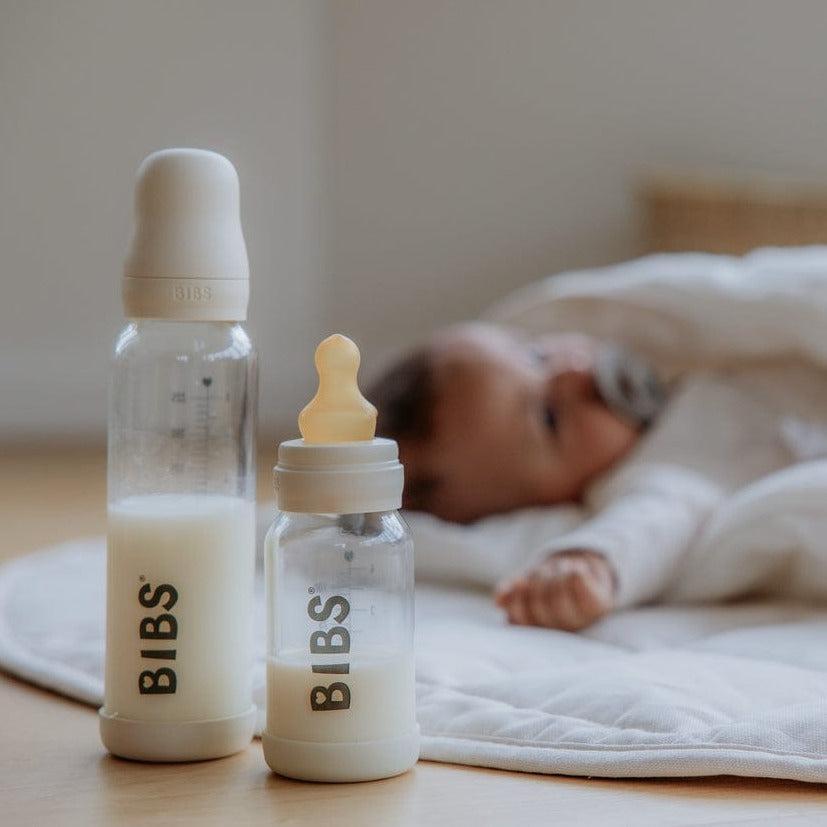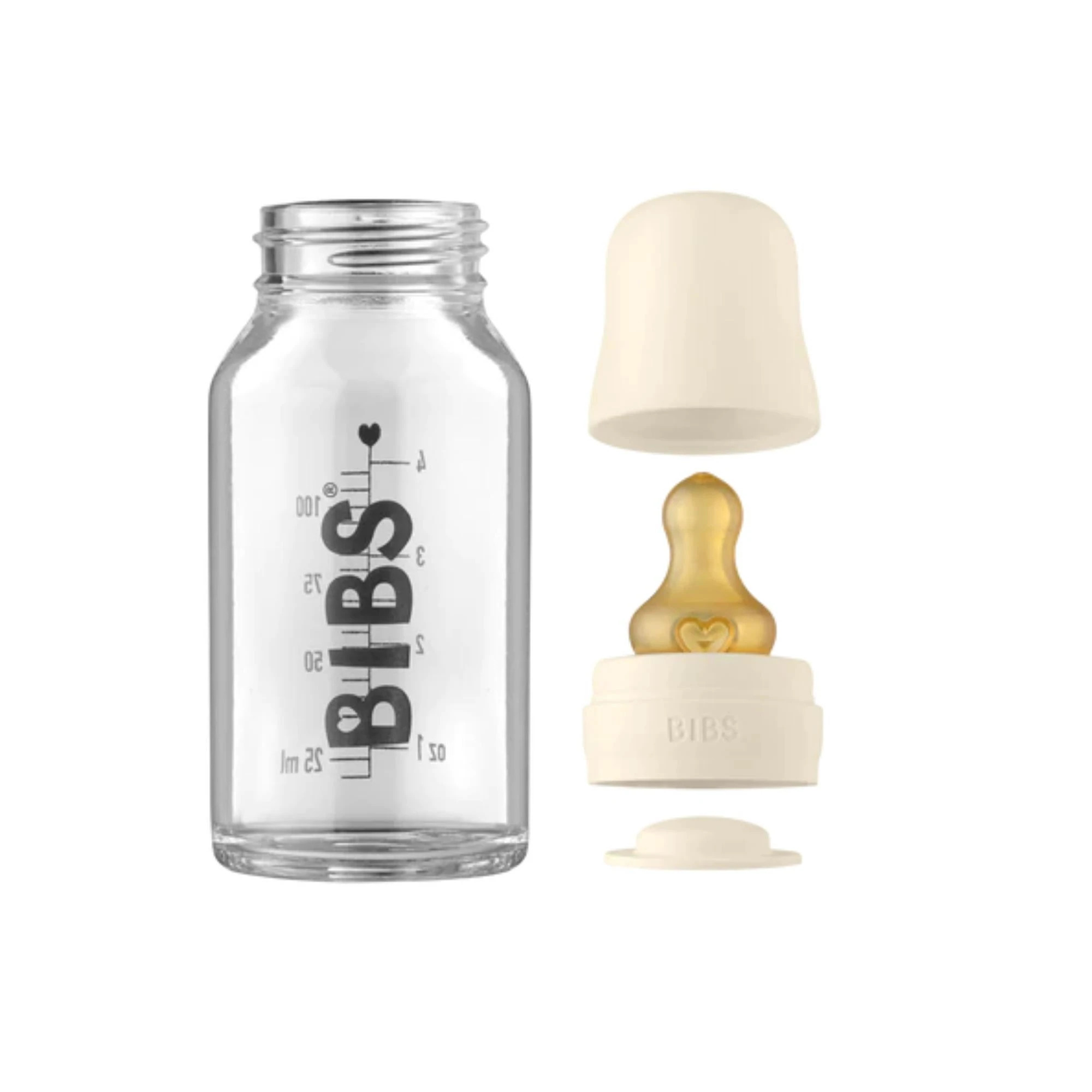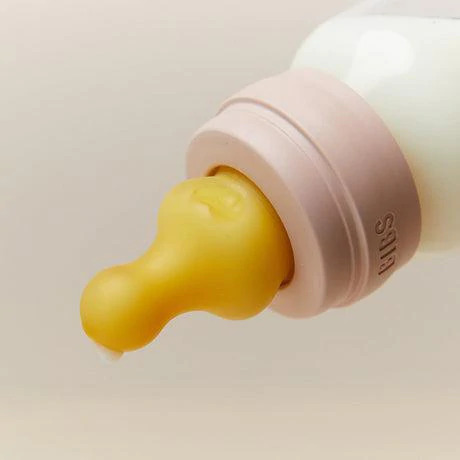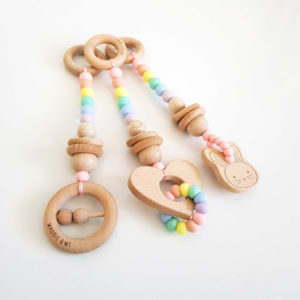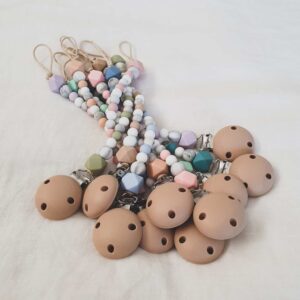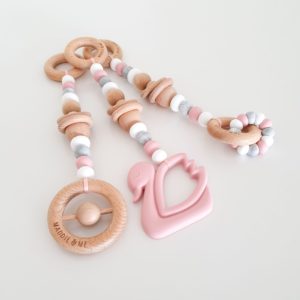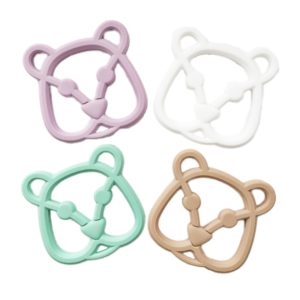Shop
BIBS Bottle Nipple (2pk) | Latex
$5.00
or 4 payments of $1.25 with Afterpay
NB: This is bottle nipples only. All other parts must be purchased separately.
- Recommended by midwives to support natural breastfeeding
- Designed with an anti-colic function
- Round nipple in natural rubber latex
Nipple Information
The round nipple promotes a similar tongue placement and sucking technique when breastfeeding, since the round shape allows the sides of the tongue to elevate and cup around the nipple, just like it does during breastfeeding. This also prevents “nipple”-confusion if you are both breastfeeding and supplementing with a bottle.
The nipple is equipped with an anti-colic valve, that lets out air which reduces air swallowed while feeding.
The nipple is produced from natural rubber latex. Since natural rubber latex is a natural material, colour variation may occur.
Our bottle nipples come in two different flows: a slow flow and a medium flow.
This set includes
2 Latex Nipples
We develop our products with the greatest consideration for the planet and for the children who will inherit it.
More information on use and cleaning in our “Description tab.
Description
Before first use
The latex nipple must be cleaned and sterilised before each use by scalding.
- Pour it with boiling water and let it soak in the water for approx. 5 min.
- Pick it up and let it dry on a clean towel.
DO NOT use microwave sterilising or cleaning products or even dishwasher as it will break down the natural rubber latex. Renew the nipple after using it for 4-6 weeks for safety and hygiene reasons. Please do not leave the nipple in direct sun.
Further, always inspect the nipple before each use by pulling the nipple in all directions inspecting it carefully before use, and replacing the nipple at the first sign of damage or weakness.
Flow rate guide
Since all babies are unique, it might be necessary to try out different flow rates to find the flow that suits your baby’s feeding habits.
However, for newborn babies, a slow flow rate is recommended for slowing down bottle-feeding to better mimic breastfeeding, to better control milk intake, and secure babies do not overeat. Normally, will the flow rate change over time as the baby grows, and the older the baby gets he or she will prefer a faster flow rate.
However, every child is different, and many factors determine which flow rate suits your child! That is also why we have not age-specified our nipples and their flow rate.
Breastfed vs. formula fed baby
When giving a breastfeeding baby a bottle, registered nurse Kirsten Lise Andersen recommends, that you always use a bottle nipple with a slow flow. This is because breastfed babies are used to working for the milk during breastfeeding since it is harder for the baby to suck out milk from a breast than a bottle. The flow rate must reflect the flow from the breast. If it is too easy for the baby, he or she might start to get lazy or even refuse the breast.
It should take approx. 15-20 minutes to finish a bottle. If it is much faster you should consider a slower flow, and if it is much slower you should consider a faster flow.
If your baby is not breastfed, you don’t have to mimic the breast as much. To find the right flow rate you can follow the following signs:
Signs that the flow rate is too slow:
- The baby becomes impatient or aggravated when eating.
- It takes longer than 15-20 minutes to finish a bottle or the baby falls asleep during eating.
Signs that the flow rate is too fast:
- The baby is gulping.
- The baby is coughing.
- The baby is choking.
- The baby is swallowing too much air.
Additional Information
| Flow | Slow Flow, Medium Flow |
|---|
